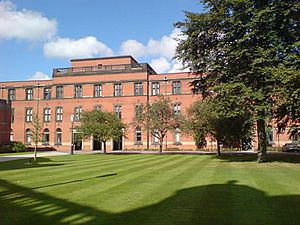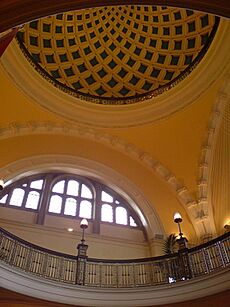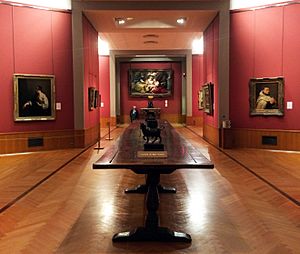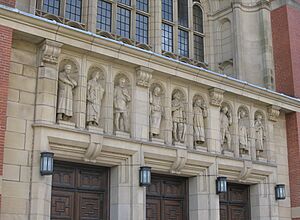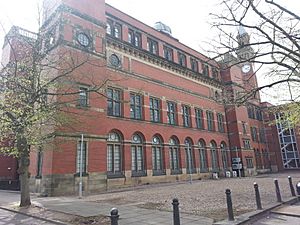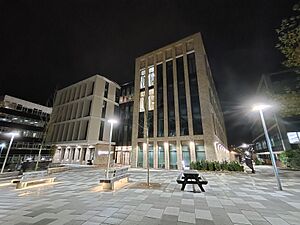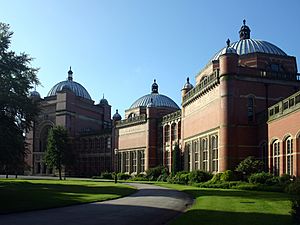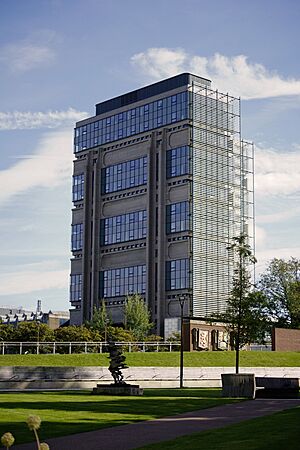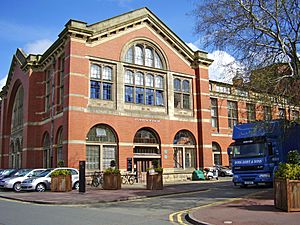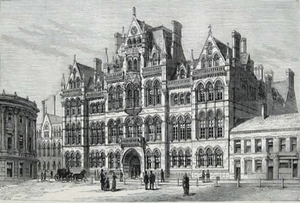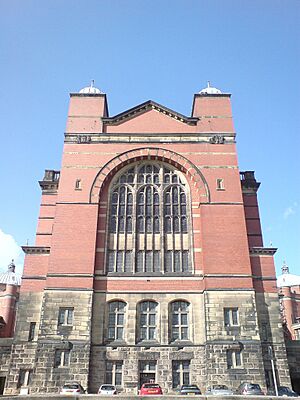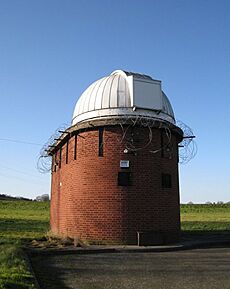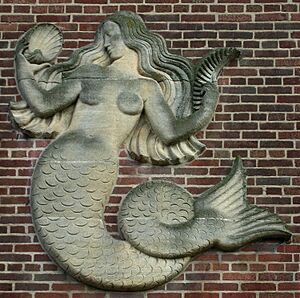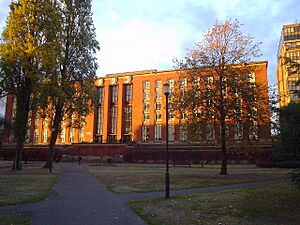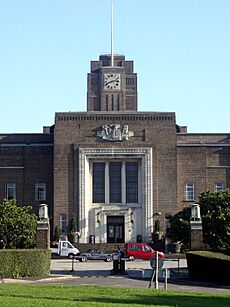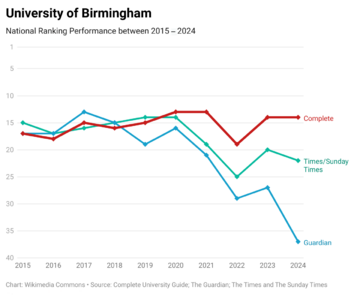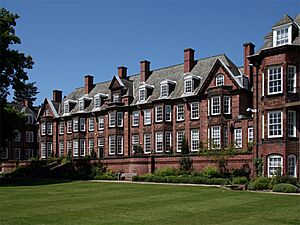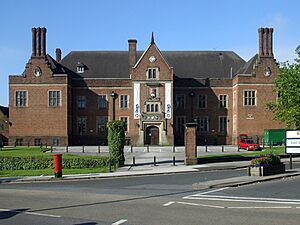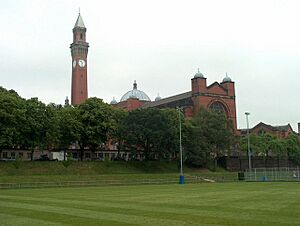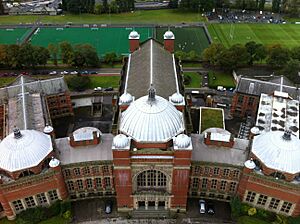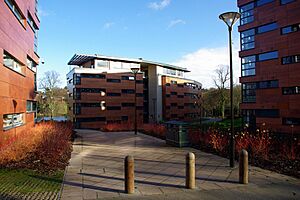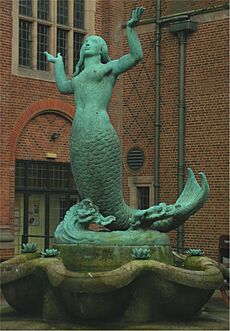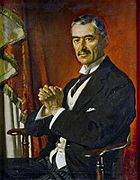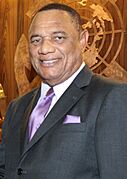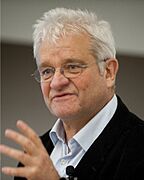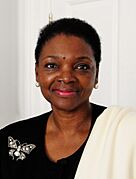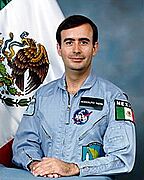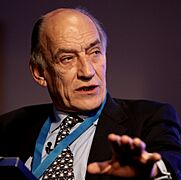University of Birmingham facts for kids
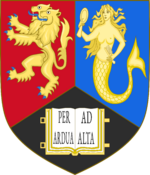
|
||||||||||||||||||||||||||||||||||||||||||||||||||||||||||||||||||||||||||||||||||||||||||||
| Latin: Universitas Birminghamiensis | ||||||||||||||||||||||||||||||||||||||||||||||||||||||||||||||||||||||||||||||||||||||||||||
| Motto | Latin: Per Ardua ad Alta | |||||||||||||||||||||||||||||||||||||||||||||||||||||||||||||||||||||||||||||||||||||||||||
|---|---|---|---|---|---|---|---|---|---|---|---|---|---|---|---|---|---|---|---|---|---|---|---|---|---|---|---|---|---|---|---|---|---|---|---|---|---|---|---|---|---|---|---|---|---|---|---|---|---|---|---|---|---|---|---|---|---|---|---|---|---|---|---|---|---|---|---|---|---|---|---|---|---|---|---|---|---|---|---|---|---|---|---|---|---|---|---|---|---|---|---|---|
|
Motto in English
|
Through efforts to heights | |||||||||||||||||||||||||||||||||||||||||||||||||||||||||||||||||||||||||||||||||||||||||||
| Type | Public | |||||||||||||||||||||||||||||||||||||||||||||||||||||||||||||||||||||||||||||||||||||||||||
| Established |
|
|||||||||||||||||||||||||||||||||||||||||||||||||||||||||||||||||||||||||||||||||||||||||||
| Endowment | £155.8 million (2024) | |||||||||||||||||||||||||||||||||||||||||||||||||||||||||||||||||||||||||||||||||||||||||||
| Budget | £926 million (2023/24) | |||||||||||||||||||||||||||||||||||||||||||||||||||||||||||||||||||||||||||||||||||||||||||
| Chancellor | Sandie Okoro | |||||||||||||||||||||||||||||||||||||||||||||||||||||||||||||||||||||||||||||||||||||||||||
| Vice-Chancellor | Adam Tickell | |||||||||||||||||||||||||||||||||||||||||||||||||||||||||||||||||||||||||||||||||||||||||||
| Visitor | The Rt Hon Lucy Powell MP (as Lord President of the Council ex officio) | |||||||||||||||||||||||||||||||||||||||||||||||||||||||||||||||||||||||||||||||||||||||||||
|
Academic staff
|
4,205 (2023/24) | |||||||||||||||||||||||||||||||||||||||||||||||||||||||||||||||||||||||||||||||||||||||||||
| Students | (2015/16) 32,850 FTE (2015/16) |
|||||||||||||||||||||||||||||||||||||||||||||||||||||||||||||||||||||||||||||||||||||||||||
| Undergraduates | (2015/16) | |||||||||||||||||||||||||||||||||||||||||||||||||||||||||||||||||||||||||||||||||||||||||||
| Postgraduates | (2015/16) | |||||||||||||||||||||||||||||||||||||||||||||||||||||||||||||||||||||||||||||||||||||||||||
| Location |
,
England
52°27′2″N 1°55′50″W / 52.45056°N 1.93056°W |
|||||||||||||||||||||||||||||||||||||||||||||||||||||||||||||||||||||||||||||||||||||||||||
| Campus | Urban, suburban | |||||||||||||||||||||||||||||||||||||||||||||||||||||||||||||||||||||||||||||||||||||||||||
| Colours | The University
College scarves
College of Arts and Law
|
|||||||||||||||||||||||||||||||||||||||||||||||||||||||||||||||||||||||||||||||||||||||||||
| Affiliations |
|
|||||||||||||||||||||||||||||||||||||||||||||||||||||||||||||||||||||||||||||||||||||||||||
The University of Birmingham is a public research university in Birmingham, England. It received its special permission from the King or Queen (called a royal charter) in 1900. This made it the first English "red brick" university to get its own royal charter. It was also the first English university to be a single, unified institution.
The university is a founding member of the Russell Group. This is a group of leading research universities in the UK. It is also part of Universitas 21, an international network of research universities.
In 2024, the university had many students. This included undergraduate students and postgraduate students. This makes it one of the largest universities in the UK. The university's income for 2023–24 was £926 million. A big part of this came from research projects.
The university has many interesting places. These include the Barber Institute of Fine Arts, which displays famous paintings. It also has the Shakespeare Institute and the Cadbury Research Library. The library holds old Middle Eastern manuscripts. The Lapworth Museum of Geology is also here. A tall clock tower, the Joseph Chamberlain Memorial Clock Tower, is a famous landmark. Many important people have studied or worked here. These include former British Prime Ministers Neville Chamberlain and Stanley Baldwin. The famous composer Sir Edward Elgar also had a role here. Eleven Nobel laureates are connected to the university.
Contents
History of the University
Early Beginnings: Queen's College
The university's story began with Queen's College, Birmingham. This college was linked to William Sands Cox. He wanted to create a medical school based on Christian values. The very first medical classes in England or Wales were held in Birmingham in 1767–68. These were taught by John Tomlinson.
A medical school grew from the Birmingham Workhouse Infirmary. It was founded in 1828. Queen Victoria supported the Clinical Hospital in Birmingham. She allowed it to be called "The Queen's Hospital." This was the first teaching hospital outside London. In 1843, the medical college became Queen's College.
Mason Science College
In 1870, Sir Josiah Mason started the Mason Science College. He was a rich industrialist from Birmingham. He made his money from things like key rings and pens. This college was founded in 1875. It became the main part of what would become the University of Birmingham.
By 1882, many science departments moved to Mason Science College. These included Chemistry, Botany, and Physics. The Medical School also moved there. This made the college more important. In 1898, it became Mason University College. Joseph Chamberlain became the head of its governing body.
Becoming a University: The Royal Charter
It was mostly thanks to Joseph Chamberlain that the university received its royal charter. This special permission was given by Queen Victoria on March 24, 1900. The Calthorpe family then gave 25 acres of land for the new university.
The new university officially opened on May 31, 1900. Joseph Chamberlain became its first leader, called the chancellor. Sir Oliver Lodge was the first principal. A symbol from Josiah Mason's family crest, a mermaid, is still seen on the university's shield today.
In 1901, Sir William Ashley started the business faculty. From 1905 to 1908, Edward Elgar, a famous British composer, taught music at the university.
During World War I, the Great Hall was used as a hospital. It treated many injured soldiers. In 1921, Linetta de Castelvecchio became the first woman professor at the university. She was one of the first women professors in Great Britain.
Growing Bigger: Expansion
In 1939, the Barber Institute of Fine Arts opened. In 1946, the university started the first courses in Physical Education. It also made sports compulsory for new students for a while. Birmingham was the first UK university to offer a sports degree.
In 1956, the university started a program in Nuclear Reactors. This was the same year the world's first commercial nuclear power station opened. The university expanded greatly in the 1960s. Many large buildings were constructed. Birmingham also helped start Keele University and the University of Warwick.
Malcolm X, a famous human rights activist, spoke at the university in 1965.
Amazing Discoveries and Inventions
The university has been part of many important scientific breakthroughs. From 1925 to 1948, Sir Norman Haworth was a Chemistry Professor. He won the Nobel Prize in Chemistry in 1937 for his work on sugar structures.
The cavity magnetron was developed here by Sir John Randall, Harry Boot, and James Sayers. This invention was very important during World War II. In 1940, the Frisch–Peierls memorandum was written here. This document showed that an atomic bomb was possible.
In 1947, Sir Peter Medawar joined the university. He won the Nobel Prize in Physiology or Medicine in 1960. He won it for his work on how the body accepts or rejects transplanted organs.
Recent History
In 2010, the university announced it would not use the UCAS clearing process. This meant all its places were already filled. This was a sign of how popular the university had become.
The university was a training camp for the Jamaican athletics team before the 2012 London Olympics. A new main library opened in 2016. A new sports center opened in 2017.
Birmingham was chosen to host the 2022 Commonwealth Games. The university was the main village for 3,500 athletes. It was also a training venue for swimming and athletics.
Challenges and Changes
The university has faced some challenges. Between 2008 and 2011, it had some disagreements with staff. In 2011, there was a discussion about student protests. The university got a court order to prevent certain protest actions. This order applied to a specific group of students.
University Campuses
Edgbaston Campus
Original Buildings
The main campus is about 3 miles southwest of Birmingham city centre. It is in Edgbaston. The campus is built around the Joseph Chamberlain Memorial Clock Tower. This tower is often called 'Old Joe' or 'Big Joe'. It honors the university's first chancellor, Joseph Chamberlain. He helped the university get its Royal Charter in 1900.
The university's Great Hall is in the Aston Webb Building. This building is named after one of its architects. The land for the campus was given to the university in 1900. Money from rich people like Andrew Carnegie helped build the grand buildings.
The original buildings are made of red brick. They form a semicircle around Chancellor's Court. The clock tower stands in the middle of the court.
The Famous Clock Tower

The clock tower was inspired by a tower in Siena, Italy. When it was built, it was called 'the intellectual beacon of the Midlands'. It was Birmingham's tallest building until 1969. It is still one of the tallest buildings in the UK. It is the tallest free-standing clock tower in the world. Its height is listed as both 110 meters and 325 feet.
The campus has many different building styles. The Guild of Students building was designed by Holland W. Hobbiss. It was described as "Redbrick Tudorish."
A statue of George I on horseback is at the entrance. It was brought from Dublin in 1937.
The Vale area of the campus was developed in the 1940s. Landscape architect Mary Mitchell designed its layout. Construction started in 1962 with a 3-acre artificial lake.
Modern Expansion

The university expanded a lot in the 1960s. Many new buildings were constructed. The Faculty of Commerce and Social Science, now called the Ashley Building, was finished in 1965.
The Physical Education Centre was built in 1966. It has a unique roof design. Also in 1966, the Mining and Minerals Engineering building was completed. It won an award for its design.
In 1967, Lucas House, a new student hall, opened. The Medical School was also extended. In 1968, the Institute for Education opened.
The Muirhead Tower was finished in 1969. It houses the Colleges of Social Sciences and the Cadbury Research Library. It was refurbished in 2009.
The Bramall Music Building, a concert hall, was completed in 2012. It finishes the redbrick semicircle of the Aston Webb building.
University Railway Station
In 1978, University station opened. It serves the university and its hospital. It is the only university campus in mainland Britain with its own railway station. A new station facility was completed in January 2024.
Other Features
The Edgbaston campus also has the Winterbourne Botanic Garden. This is a large Edwardian-style garden. A statue by Sir Edward Paolozzi, named 'Faraday', is also on campus.
The Lapworth Museum of Geology is in the Aston Webb Building. It is named after Charles Lapworth, a geologist.
Since 2007, the university has held a farmers' market on campus. It was the first university in the UK to have an accredited farmers' market.
In 2019, the university finished its Green Heart Project. This created a large green space on campus. In 2021, the university opened The Exchange in the city center.
Selly Oak Campus
The university's Selly Oak campus is a short distance south of the main campus. It used to be home to a group of colleges called Selly Oak Colleges. These colleges focused on theology, social work, and teacher training.
A new library, the Orchard Learning Resource Centre, opened in 2001. Today, the Selly Oak campus is home to the Department of Drama and Theatre Arts. The UK TV show Doctors is filmed here. The University of Birmingham School also opened on this campus in 2015.
Former City Centre Campuses
The old Mason College Building was in Birmingham city center. It housed the Faculties of Arts and Law for over 50 years. This building was taken down in 1962.
The original Queen's College building was also in the city center. It was demolished in the 1970s, except for its front.
Dubai Campus
The university also has a campus in Dubai. It was started in 2017. A new campus building opened in 2022. Teachers from the UK campus work there.
How the University is Organized
Academic Departments
Birmingham has many departments covering a wide range of subjects. In 2008, the university was reorganized into five main 'colleges'. These colleges have many 'schools' inside them:
- Arts and Law (like English, History, Law, and Music)
- Engineering and Physical Sciences (like Chemistry, Computer Science, and Physics)
- Life and Environmental Sciences (like Biosciences, Geography, and Psychology)
- Medicine and Health (various medical institutes)
- Social Sciences (like Business, Education, and Social Policy)
The university also has many research centers. These include the Birmingham Business School, the oldest business school in England. It also has the Shakespeare Institute. The university is home to the Birmingham Solar Oscillations Network (BiSON). This network uses telescopes to study the sun.
International Development Department
The International Development Department (IDD) helps reduce poverty. It does this by studying how to create good government systems. It is a well-known center for studying international development.
Places Away from Main Campuses
Some parts of the university are located away from the main campuses:
- The Shakespeare Institute is in Stratford-upon-Avon. It is for studying William Shakespeare.
- The Ironbridge Institute is in Ironbridge. It offers courses on heritage.
- The School of Dentistry is in Birmingham City Centre. It is the UK's oldest dental school.
- The Raymond Priestley Centre is in the Lake District. It is used for outdoor activities.
University of Birmingham Observatory
The University of Birmingham built an observatory in the early 1980s. It is about 5 miles south of the main campus. The night sky there is much darker. The observatory is mainly used for teaching students. It has two main telescopes. The public can visit the observatory during special "Astronomy in the City" events.
University Finances
In the financial year ending July 31, 2024, Birmingham's total income was £926 million. Its total spending was £726.5 million. A large part of its income came from student fees and research projects.
The university has a large amount of money saved, called an endowment. In 2024, this was £155.8 million. This is one of the largest endowments among UK universities.
University Symbols
The university's original coat of arms was designed in 1900. It shows a double-headed lion and a mermaid. These symbols come from the coat of arms of Mason College, an earlier part of the university.
In 2005, the university updated its branding. It went back to a more detailed version of its shield.
Academic Achievements
Libraries and Collections
The university has six libraries. These include the Barber Fine Art Library and the Main Library. The Shakespeare Institute's library is very important for studying English Renaissance literature.
The Cadbury Research Library holds the university's old and rare collections. It has over 200,000 rare books and over 4 million unique old papers. These collections help with research and teaching.
The Cadbury Research Library has papers from famous people like Neville Chamberlain and Anthony Eden. It also has records from the Cadbury firm and the Church Missionary Society. In 2015, a Quranic manuscript in the Mingana Collection was found to be one of the oldest in the world.
A new main library opened in 2016. The old library was taken down to create a 'Green Heart' area.
Medical School
The University of Birmingham's medical school is one of the largest in Europe. It trains over 450 medical students each year. It has many teaching and research staff. The school is known for its research in areas like cancer and heart disease.
The medical school works closely with the NHS. It partners with 15 teaching hospitals and 50 local health practices. The University Hospital Birmingham NHS Foundation Trust is the main teaching hospital.
Rankings and Reputation
| National rankings | |
|---|---|
| Complete (2021) | 14 |
| Guardian (2021) | 36 |
| Times / Sunday Times (2021) | 22 |
| Global rankings | |
| ARWU (2020) | 151–200 |
| CWTS Leiden (2020) | 87 |
| QS (2021) |
76 |
| THE (2021) | 93= |
| British Government assessment | |
| Teaching Excellence Framework | Gold |
In 2022, U.S. News & World Report ranked Birmingham 91st in the world. In 2021, the Times Higher Education placed Birmingham 12th in the UK. In 2013, Birmingham was named 'Sunday Times University of the Year 2014'.
The 2013 QS World University Rankings placed Birmingham University 10th in the UK and 62nd internationally. In 2015, the Complete University Guide ranked Birmingham 5th in the UK for how well graduates find jobs.
Birmingham has always been strong in science, engineering, and business. It was home to the first Cancer Research UK Centre. It has also made important contributions to studying gravitational-wave astronomy.
Student Admissions
|
| Domicile and Ethnicity | Total | ||
|---|---|---|---|
| British White | 45% |
|
|
| British Ethnic Minorities | 28% |
|
|
| International EU | 2% |
|
|
| International Non-EU | 26% |
|
|
| Undergraduate Widening Participation Indicators | |||
| Female | 55% |
|
|
| Independent School | 14% |
|
|
| Low Participation Areas | 9% |
|
|
In 2021, Birmingham ranked 26th in Britain for the average entry grades of its students. In 2017, about 20% of Birmingham's undergraduate students came from independent schools. In 2022, the university offered places to 61.3% of undergraduate applicants.
In the 2016–17 school year, 76% of students were from the UK. 5% were from the EU, and 18% were from outside the EU. More women than men attended, with a ratio of 56:44. Many international students come from China.
Birmingham Heroes
The university highlights its top researchers through the Birmingham Heroes scheme. These academics lead research that helps people locally and globally. Some heroes include:
- Scientists working on the first observation of gravitational waves.
- Researchers improving energy-efficient cooling.
- Experts tackling liver disease and diabetes.
- People promoting good character in education.
- Those working to reduce the stigma of mental illness.
- Scientists researching cancer.
- Experts studying healthy ageing.
- Historians advising government groups.
- Researchers developing new materials for energy generation.
- Scientists studying pollutants, especially tiny ones.
- Experts helping with post-conflict situations and aid.
- Researchers working on sustainable transport.
- Innovators driving economic growth in areas like aerospace engineering.
Birmingham Fellows
The Birmingham Fellowship scheme started in 2011. It helps promising young researchers develop their careers. This scheme was the first of its kind in the UK. Fellows get protected time to focus on their research. They also receive support and mentorship.
International Partnerships
The University of Birmingham works with other universities around the world. For example, it partners with the Goethe University Frankfurt in Germany. This is part of a long-standing friendship between the two cities.
Student Life
Guild of Students
The University of Birmingham Guild of Students is the university's student union. It started around 1876 at Mason Science College. When the university got its Royal Charter in 1900, the Guild became the Student Representative Council.
The Guild helps students in many ways. It represents students and provides social activities. It has many student societies and clubs, about 220 at any time. It also offers services like advice and job support. The Guild runs bars, eateries, and social spaces.
The Guild publishes a campus newspaper called Redbrick. This was one of the first university newspapers in the UK. Student officers lead the Guild. They work with university leaders.
Sports and Activities
University of Birmingham Sport offers many sports clubs. These include rowing, basketball, football, rugby, and hockey. In 2017, a new Sport and Fitness Centre opened. It has a gym, squash courts, a 50-meter swimming pool, and a climbing wall.
The university has international standard hockey pitches. It also has pitches for football, netball, and tennis. There is a 400-meter athletics track. The Raymond Priestley Centre in the Lake District offers outdoor activities. The university also gives scholarships to talented athletes.
In 2019, the university was ranked seventh in the British Universities and Colleges Sport league table. Many students and alumni have competed in the Olympics and Commonwealth Games. For example, six students and eighteen alumni competed in the 2018 Commonwealth Games. Three student athletes competed in Paris 2024.
Student Housing
The university provides housing for most first-year students. About 90% of university housing is for first-year students.
The university has different student housing areas, called villages.
Vale Village
The Vale Village is home to about 2,700 students. It includes halls like Chamberlain Hall, Shackleton, and Mason Hall. Shackleton Hall was renovated in 2004. Mason Hall was rebuilt and reopened in 2008.
The new Chamberlain Tower opened in 2015. It replaced an older tower. The largest student event, the Vale Festival or 'ValeFest', is held here every year. It raises money for charity.
Pritchatts Park Village
The Pritchatts Park Village houses over 700 students. It includes halls like 'Ashcroft' and 'Oakley Court'. Oakley Court was completed in 1993.
Selly Oak Village
The Selly Oak Village has three residences. These include Jarratt Hall. In 2008, this village had 637 student beds.
The Manor House, Northfield
The university also owns the Northfield Manor House. It was used for student housing until 2007. After a fire in 2014, the university rebuilt and restored it. It is now used for flats.
Student Housing Co-operative
The Birmingham Student Housing Co-operative opened in 2014. It provides affordable housing for its members.
Notable People
Academics and Staff
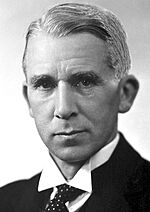

Many famous academics have worked at the university. These include Nobel laureates like Sir Norman Haworth and Sir Peter Medawar. Other famous scientists include physicists John Henry Poynting and Sir Rudolf Peierls.
Composers Sir Edward Elgar and Sir Granville Bantock taught music here. The writer David Lodge taught English. Lord Zuckerman was a Professor of Anatomy and later a science adviser to the British government. Lord King of Lothbury was a professor and later Governor of the Bank of England.
Famous Alumni
-
Nobel Prize laureate, Sir Paul Nurse
-
Politician and diplomat, Baroness Amos
-
Astronaut, Rodolfo Neri Vela
Four Nobel Prize winners are alumni of Birmingham University. These include Francis Aston and Sir Paul Nurse.
Many alumni have become important in government and politics. These include British Prime Ministers Stanley Baldwin and Neville Chamberlain. Other leaders include Prime Minister of the Bahamas Perry Christie and Zambian President Hakainde Hichilema.
In business, alumni include former CEOs of major companies like Sainsbury's and BP. In law, alumni include the Chief Justice of Hong Kong, Geoffrey Ma Tao-li.
Famous actors and comedians who studied here include Tim Curry, Tamsin Greig, and Victoria Wood. Musicians include Simon Le Bon from Duran Duran and Christine McVie from Fleetwood Mac.
In sports, alumni include Olympic gold medalist Paul Manning (cyclist) and triathlete Chrissie Wellington.
See also
 In Spanish: Universidad de Birmingham para niños
In Spanish: Universidad de Birmingham para niños
- Armorial of UK universities
- List of modern universities in Europe (1801–1945)
- List of universities in the United Kingdom


